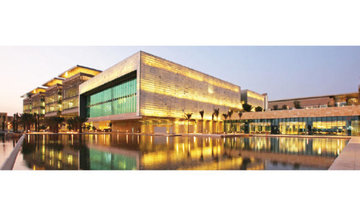RIYADH: Saudi Arabia’s Art Pure Gallery Foundation is currently hosting an exhibition, “Songs of Silence in Nature,” by the renowned Chinese artist Shu Li.
Organized in collaboration with the Chinese Embassy in Saudi Arabia, the exhibition opened on June 24, 2024 and will run until July 25, 2025 in the Saudi capital.
A leading figure in contemporary Chinese art, Shu Li has held distinguished roles within China’s national cultural institutions.
His works have been showcased in more than 20 countries, including the Leonardo da Vinci Museum in Italy.
He has received numerous international accolades in countries such as Russia, Belgium, the US, Ukraine and India, and is a distinguished academician of the Russian Academy of Arts.
His paintings are featured in some of China’s most iconic venues, including the National Art Museum of China, the Great Hall of the People, and the headquarters of the Chinese Communist Party.
He has also published more than 20 catalogues chronicling his artistic evolution.
Shu Li’s work blends traditional Chinese techniques with a distinctly contemporary sensibility.
Characterized by tranquil landscapes, his pieces often depict mist-shrouded mountains and serene lakes. These works invite viewers to enter a meditative and reflective state.
“Art is not merely a visual encounter,” the artist explained, “but an emotional journey.
“Through my oil paintings, I aim to capture those fleeting moments of beauty that enrich our daily existence.
“My work is a dialogue between the canvas and the world it portrays — a world where light dances across surfaces and color speaks more powerfully than words.
“Each painting is an exploration of texture, form and the expressive potential of oil as a medium. I draw inspiration from nature, human experience and the myriad ways in which art connects us to both. I invite viewers to do more than just observe my work; I want them to feel it and enter the narrative that each painting weaves.”
This exhibition is part of an increasing cultural dialogue between China and Saudi Arabia. It reflects the desire of both countries to strengthen their artistic exchange and deepen the ties between these two ancient and influential civilizations.
Contemporary Chinese art embodies a rich synthesis of millennia-old traditions and modern perspectives.
Since the late-20th century, Chinese artists have experimented with various forms, including painting, sculpture, installation and video, to explore the tensions between heritage, rapid urbanization and evolving social realities.
Often merging classical craftsmanship with avant-garde techniques, they explore themes of identity, collective memory and the challenges of the present age.
Today, China’s vibrant art scene is widely recognized internationally, with many leading Chinese artists playing a pivotal role in reshaping the global contemporary art landscape.
The Art Pure Gallery Foundation is a leading Saudi cultural institution founded in 1999.






























